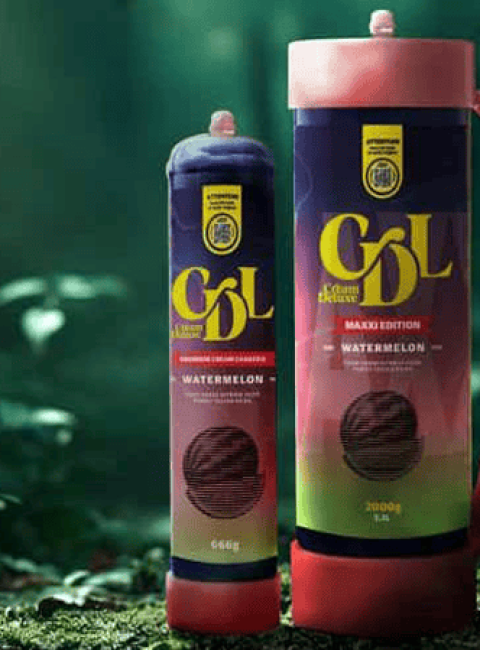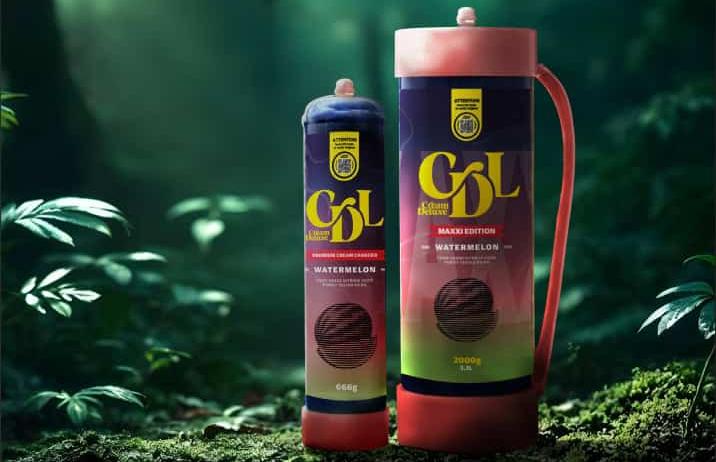poháněné PiQR.io
poháněné PiQR.io


Potravinářský oxid dusný (N₂O), běžně známý jako "směšný plyn", je bezbarvý, nehořlavý plyn bez zápachu, který se široce používá při vaření, ve zdravotnictví a v průmyslu. V kuchyni se N₂O používá především ke šlehání smetany, vytváření pěny a přidávání textury syceným nápojům. Stále častější zneužívání N₂O však vyvolává všeobecné obavy, zejména mezi dospívajícími, protože nesprávné používání může vést k vážným zdravotním problémům.
Potravinářský oxid dusný (N₂O) je považován za bezpečný v kulinářství, zejména při šlehání smetany, vytváření pěny a vylepšování struktury sycených nápojů. Zneužívání tohoto plynu k navození euforického pocitu však může vést k vážným zdravotním problémům, jako je poškození nervového systému, kardiovaskulární problémy a psychické problémy. Oxid dusný pro potravinářské účely by se proto měl používat pouze pro legitimní účely zpracování potravin a nikoli pro rekreační inhalaci.

Potravinářský oxid dusný je vysoce čistý plyn, obvykle o čistotě 99,5% nebo vyšší, který se používá zejména při zpracování potravin a vaření. V porovnání s průmyslovým nebo lékařským dusíkem N₂O prochází potravinářský dusík během výroby přísným čištěním a testováním, aby se zajistilo, že neobsahuje škodlivé nečistoty, jako jsou oleje a kovové částice, čímž se zabrání jakýmkoli potenciálním rizikům pro bezpečnost potravin a lidské zdraví.
Potravinářský N₂O se používá především k:
Je důležité si uvědomit, že N₂O pro potravinářské účely je přísně omezen na tyto účely a neměl by se používat v oblastech, které nesouvisejí s potravinami.
Ačkoli je N₂O v potravinářství považován za bezpečný při vaření, jeho zneužívání k rekreačním účelům se stalo celosvětovým problémem veřejného zdraví. Zneužití N₂O může vést k následujícím zdravotním rizikům:
Dlouhodobá inhalace N₂O může potlačit aktivitu vitaminu B₁₂ v těle, což vede k poškození nervového systému, které se může projevit jako:
Francouzská Národní agentura pro bezpečnost potravin, životního prostředí a zdraví při práci (ANSES) uvedla, že z 66 případů zneužití N₂O se u 42 projevily příznaky poškození nervového systému a u 4 došlo k vážnému neurologickému poškození.
Vdechnutí N₂O může způsobit náhlý pokles krevního tlaku, což vede k mdlobám, arytmii a dokonce k zástavě srdce. Riziko je ještě vyšší v kombinaci s jinými látkami, jako je alkohol nebo drogy.
Zneužívání N₂O může vést k problémům s duševním zdravím, včetně:
Tyto příznaky mohou přetrvávat i po ukončení užívání látky a ovlivňovat každodenní život.
Zneužívání N₂O může také vést k:
Hlavní rozdíly mezi potravinářským a lékařským N₂O spočívají v čistotě a použití:
N₂O potravinářské kvality není vhodný pro lékařské použití, protože může obsahovat nečistoty škodlivé pro lidský organismus.
V posledních letech se zneužívání N₂O stává celosvětově stále závažnějším problémem, zejména mezi dospívajícími a mladými dospělými. Někteří jedinci inhalují N₂O, aby dosáhli krátkodobého euforického nebo "vysokého" pocitu, ale zdravotní rizika spojená s tímto chováním by se neměla podceňovat. V některých zemích a regionech se zneužívání N₂O stalo velkým problémem pro veřejné zdraví.
Například ve Spojených státech amerických věnoval zneužívání N₂O pozornost Úřad pro kontrolu potravin a léčiv (FDA), který vydal varování pro veřejnost před riziky zneužívání N₂O.
Společnost Cream Deluxe jako odpovědný výrobce doporučuje:
Otázka 1: Může být N₂O vdechován v potravinách?
Rozhodně ne! N₂O kanystry jsou určeny pouze pro potravinářské účely a vdechnutí může vést k udušení, poškození nervů nebo dokonce smrti.
Otázka č. 2: Jak lze rozlišit N₂O potravinářské kvality od N₂O průmyslové kvality?
Výrobky potravinářské kvality jsou jasně označeny "Food Grade" a je na nich uvedena čistota (≥99,5%). Při nákupu vždy vybírejte renomované značky.
Otázka 3: Jak mám likvidovat použité kanystry?
Dodržujte místní pokyny pro recyklaci, vyhněte se jejich neopatrné likvidaci a zabraňte zneužití nebo kontaminaci životního prostředí.
Potravinářský oxid dusný je bezpečný a účinný pro profesionální vaření, ale jeho nesprávné použití může vést k vážným zdravotním krizím. Spotřebitelé si musí být vědomi hranic jeho správného použití a vyhnout se rekreačnímu používání. Pokud se v důsledku nesprávného použití objeví zdravotní problémy, okamžitě vyhledejte lékařskou pomoc a obraťte se na odborníky.
Jako lídr v oboru, Cream Deluxe upřednostňuje bezpečnost, nabízí vyhovující výrobky a vyzývá společnost, aby věnovala pozornost problému zneužívání N₂O a zajistila ochranu veřejného zdraví.
| Cookie | Doba trvání | Popis |
|---|---|---|
| cookielawinfo-checkbox-analytics | 11 měsíců | Tento soubor cookie je nastaven pomocí pluginu GDPR Cookie Consent. Tento soubor cookie slouží k uložení souhlasu uživatele se soubory cookie v kategorii "Analytika". |
| cookielawinfo-checkbox-functional | 11 měsíců | Soubor cookie je nastaven na základě souhlasu s GDPR, aby zaznamenal souhlas uživatele se soubory cookie v kategorii "Funkční". |
| cookielawinfo-checkbox-necessary | 11 měsíců | Tento soubor cookie je nastaven pomocí pluginu GDPR Cookie Consent. Soubor cookie slouží k uložení souhlasu uživatele se soubory cookie v kategorii "Nezbytné". |
| cookielawinfo-checkbox-others | 11 měsíců | Tento soubor cookie je nastaven pomocí pluginu GDPR Cookie Consent. Tento soubor cookie slouží k uložení souhlasu uživatele se soubory cookie v kategorii "Ostatní. |
| cookielawinfo-checkbox-others | 11 měsíců | Tento soubor cookie je nastaven pomocí pluginu GDPR Cookie Consent. Tento soubor cookie slouží k uložení souhlasu uživatele se soubory cookie v kategorii "Ostatní. |
| cookielawinfo-checkbox-performance | 11 měsíců | Tento soubor cookie je nastaven pomocí pluginu GDPR Cookie Consent. Tento soubor cookie slouží k uložení souhlasu uživatele se soubory cookie v kategorii "Výkon". |
| viewed_cookie_policy | 11 měsíců | Tento soubor cookie je nastaven pomocí zásuvného modulu GDPR Cookie Consent a slouží k uložení informace, zda uživatel souhlasil s používáním souborů cookie. Neukládá žádné osobní údaje. |